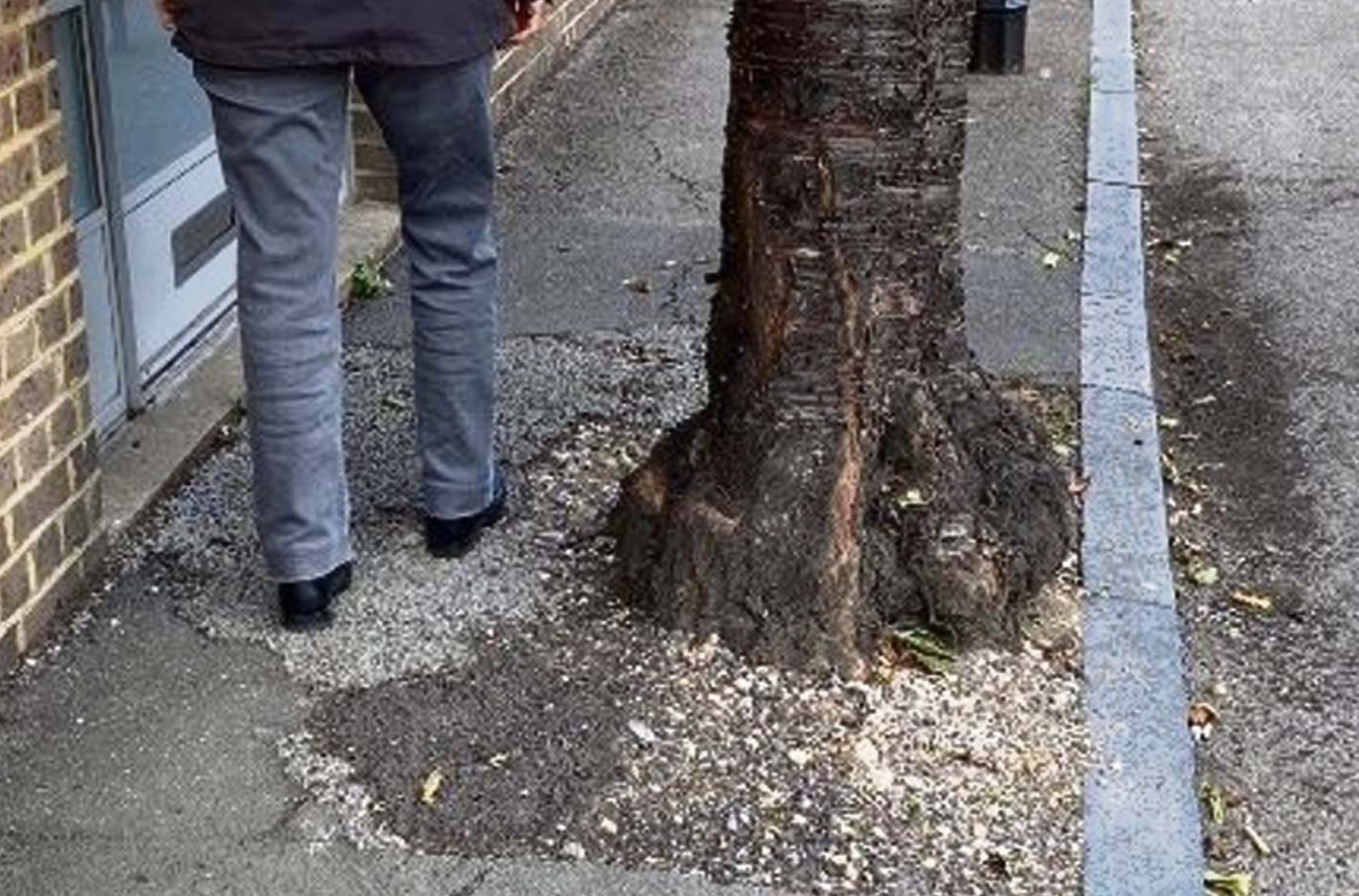Bring our pavements up to a decent standard
Friday, 27th January 2023

‘The solution… extend the pavement around the tree’
• AS part of the engagement process for Liveable Neighbourhoods the council are asking people in Barnsbury and Laycock to think about our pavements and how they could be improved.
Drivers travel around our streets, chatting with their passengers, all comfortably seated in their upholstered easy-chairs, side by side, and, barring a few pot-holes, enjoying a smooth ride.
Meanwhile, alongside them, people on foot are walking single file along narrow, uneven pavements. Hemmed in by parked cars and trees on one side, and by front garden foliage or bins on the other, this can make the footway feel like a narrow tunnel.
We have to weave around obstacles such as street furniture, puddles and dog poo. At night the parked vehicles put the pavements in shadow, making them even more dangerous to negotiate, and turning the tunnel from unpleasant to frightening.
For the frail, for wheelchair-users, and the partially-sighted, for people with children or buggies, it is all even worse. Not all pavements are like this, but many are.
What’s needed is an agreed set of standards for what makes an acceptable pavement, and we need a plan to bring all pavements up to that standard. As a bare minimum we think pavements must be level, and wide enough so that two people can walk comfortably side by side.
This would provide walkers with an experience comparable to that enjoyed by people in cars: a smooth and social journey. Both of these pavement features (level and wide) are often compromised by the street trees which line many of our roads. We hope no one would advocate removing or damaging these trees. They are a visual delight and to mitigate our air pollution crisis and climate emergency we need more trees, not fewer.
If a pavement is unacceptable due to a tree, or any unmovable object, then the solution is to extend the pavement around the tree, providing a foot-bypass.
Where the problem is a row of trees then the pavement must be widened continuously for the length of the row. In some cases this will mean removing car parking, or narrowing the space allocated for drivers to use.
Over the last 70 years we have allowed the monopolisation of our streets by vehicles to become the norm. But it doesn’t have to be like this. There is a different way to manage our public space, one that is more equitable, better for us all, and better for the future.
NAME AND ADDRESS SUPPLIED, N1